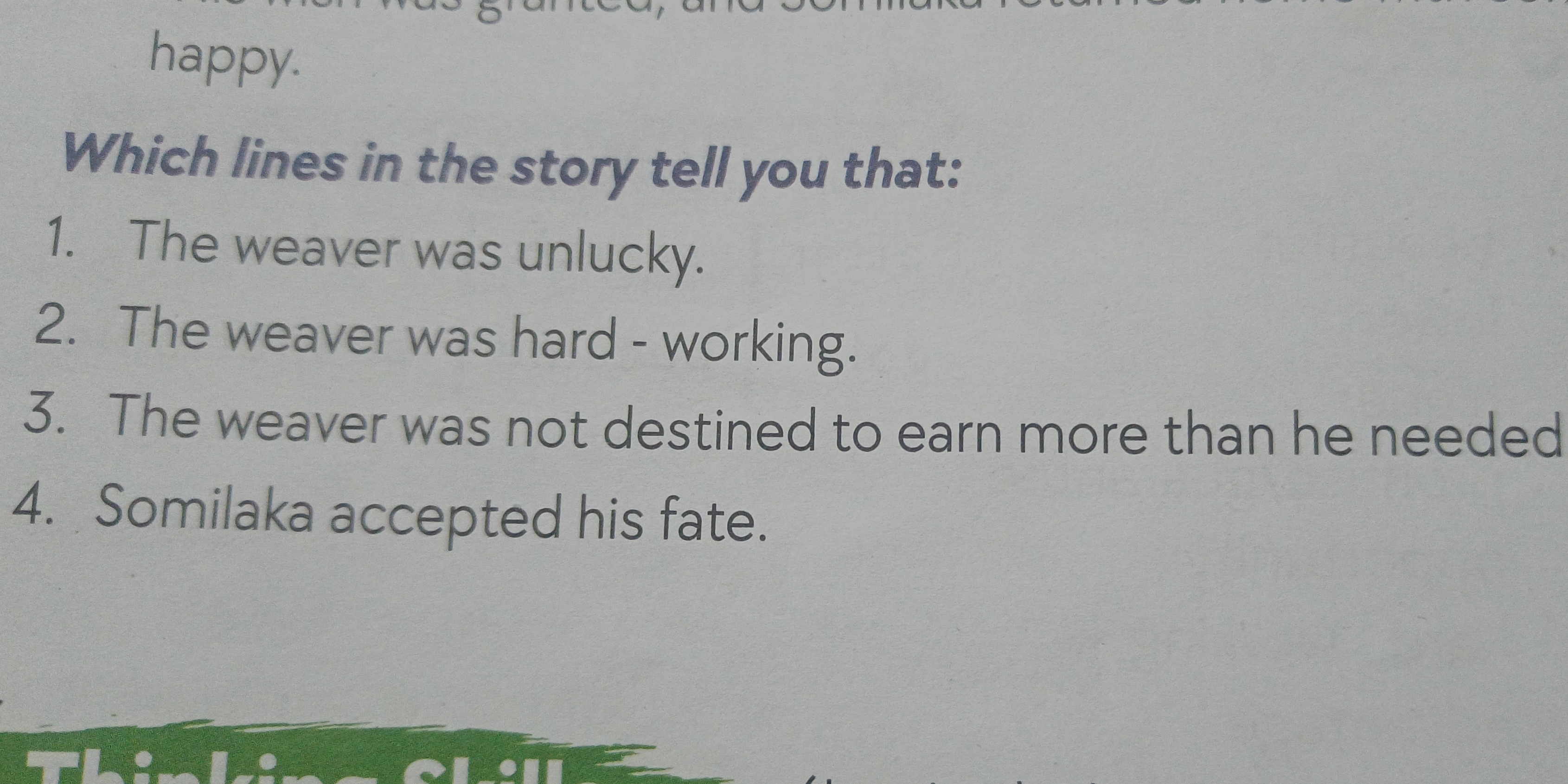Which lines in the story tell you that: 1. The weaver was unlucky. 2. The weaver was hard-working. 3. The weaver was not destined to earn more than he needed. 4. Somilaka accepted... Which lines in the story tell you that: 1. The weaver was unlucky. 2. The weaver was hard-working. 3. The weaver was not destined to earn more than he needed. 4. Somilaka accepted his fate.

Understand the Problem
The question is asking which specific lines from a story illustrate particular characteristics about a weaver and his fate. It prompts the reader to identify textual evidence supporting statements about the weaver's character and situation.
Answer
1. 'He lost money twice...' 2. 'Somilaka seeks better opportunities...' 3. 'You are not destined to earn...' 4. 'Somilaka accepted his fate...'
- The weaver was unlucky: 'He lost money twice, learning that one cannot earn what they are not destined to have.' 2. The weaver was hard-working: 'Somilaka seeks better opportunities, becomes wealthy.' 3. The weaver was not destined to earn more than he needed: 'You are not destined to earn more than you need for a living.' 4. Somilaka accepted his fate: 'Somilaka accepted his fate and returned home satisfied.'
Answer for screen readers
- The weaver was unlucky: 'He lost money twice, learning that one cannot earn what they are not destined to have.' 2. The weaver was hard-working: 'Somilaka seeks better opportunities, becomes wealthy.' 3. The weaver was not destined to earn more than he needed: 'You are not destined to earn more than you need for a living.' 4. Somilaka accepted his fate: 'Somilaka accepted his fate and returned home satisfied.'
More Information
Somilaka's story is a classic tale from the Panchatantra, highlighting themes of destiny and acceptance.
Tips
Ensure to identify context clues in the text that illustrate character traits or story morals.
AI-generated content may contain errors. Please verify critical information